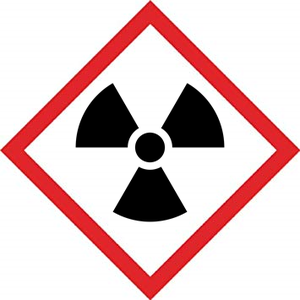Difference between revisions of "Radioactivity"
| Line 5: | Line 5: | ||
===About Radioactivity=== | ===About Radioactivity=== | ||
| + | : The term '''radioactivity''' was first coined by [[Marie Curie]] who also discovered [[radioactive]] [[isotope]]s of the [[element]]s [[Polonium]] and [[Radium]]. | ||
: The '''radioactivity''' of a [[sample]] is measured in [[Becquerel]]s (Bq) which is the number of [[Radioactive Decay|radioactive decays]] in a [[sample]] per [[second]]. | : The '''radioactivity''' of a [[sample]] is measured in [[Becquerel]]s (Bq) which is the number of [[Radioactive Decay|radioactive decays]] in a [[sample]] per [[second]]. | ||
: The '''radioactivity''' of a [[sample]] depends upon the amount of [[Unstable Isotope|unstable isotopes]] in the [[sample]] and the [[Half Life|half life]] of the [[isotope]]. | : The '''radioactivity''' of a [[sample]] depends upon the amount of [[Unstable Isotope|unstable isotopes]] in the [[sample]] and the [[Half Life|half life]] of the [[isotope]]. | ||
: '''Radioactivity''' is a [[scalar]] quantity as it has [[magnitude]] but does not have a direction. | : '''Radioactivity''' is a [[scalar]] quantity as it has [[magnitude]] but does not have a direction. | ||
Revision as of 21:02, 19 April 2019
Key Stage 4
Meaning
Radioactivity is the emission of ionising radiation from a sample of unstable isotopes.
About Radioactivity
- The term radioactivity was first coined by Marie Curie who also discovered radioactive isotopes of the elements Polonium and Radium.
- The radioactivity of a sample is measured in Becquerels (Bq) which is the number of radioactive decays in a sample per second.
- The radioactivity of a sample depends upon the amount of unstable isotopes in the sample and the half life of the isotope.
- Radioactivity is a scalar quantity as it has magnitude but does not have a direction.
